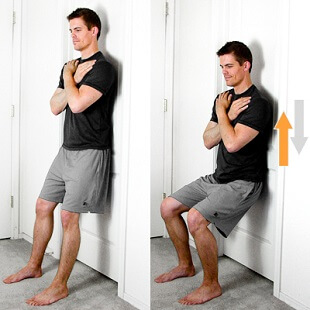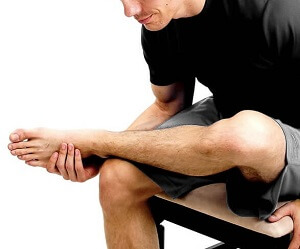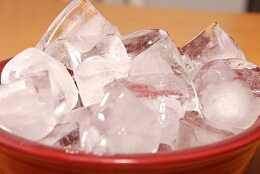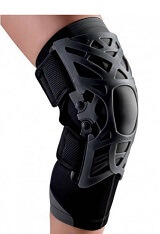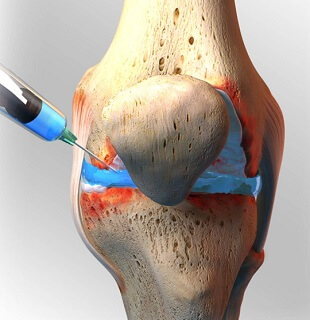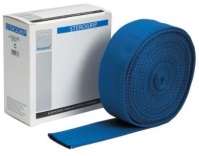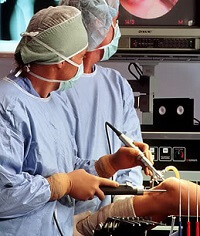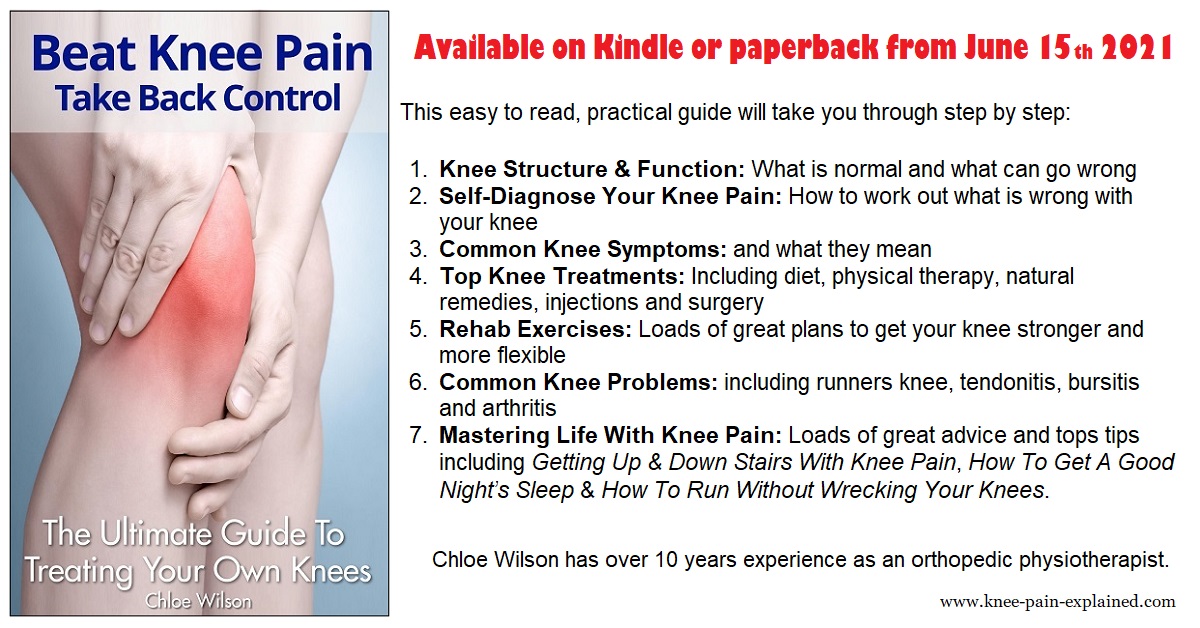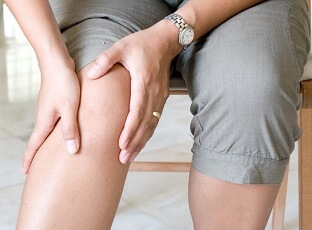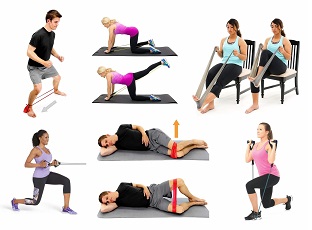- Home
- Knee Pain Treatment
Knee Joint Pain Treatment
Written By: Chloe Wilson, BSc(Hons) Physiotherapy
Reviewed by: KPE Medical Review Board
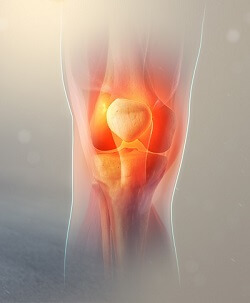
Knee joint pain treatment aims to reduce pain, instability, swelling and weakness.
Some treatments work well in the initial stages after a knee injury whereas some are more appropriate for longer term conditions.
To be effective, knee pain treatment should look to cure not just the symptoms of the problem but also what is causing it in the first place, otherwise the problem may well return in the future.
For example, the symptoms you are suffering from may be pain and inflammation but the actual cause may be weakness or instability.
Here, we will start by looking at the top ten treatments for knee. We will then go on to look more in-depth at what treatments are right for specific knee problems, share some top tips on doing stairs with knee pain and how long it takes to recover.
#CommissionsEarned from Amazon on qualifying purchases
Top 10 Knee Joint Pain Treatments
Here you will find an overview of ten of the best knee joint pain treatment options that can help as well as how to use them safely and effectively to get the best results:
1. P.R.I.C.E.
The best knee joint pain treatment to start with if you have an injury is PRICE (Protect, Rest, Ice, Compress, Elevate), previously known as RICE. This helps to protect against further injury, reduces pain and swelling and speeds up healing.
Check out the
PRICE section
to find out more about this different elements of PRICE and how to use it safely and effectively.
2. Strengthening Exercises
Strengthening the leg muscles is one of the best all-round knee joint pain treatment options.
99.9% of the time, muscle weakness is a key cause of knee problems. When there is muscle weakness, more force goes through the joint which can lead to long term problems or injuries.
Strengthening exercises improve how the knee functions by working on the strength and stability of the knee and will help virtually all causes of knee pain.
A great way to add variety and challenge to strengthening exercises is to use resistance bands. Check out our articles on the different Types Of Resistance Bands, the Benefits of Resistance Bands and Resistance Bands vs Weights
Visit the strengthening exercises section to find a whole range of exercises from beginners to advanced, including easy to follow pictures and videos.
3. Leg Stretches
Tight muscles is a common cause of knee pain as they can make subtle changes to how the forces go through different parts of the joint. By doing stretches as part of your knee treatment plan, you can reduce the tension on your joint.
Not sure if your muscles are tight? In the leg stretches section you will find simple tests you can do to see if your muscles are indeed tight and would therefore benefit from stretches.
You can also find out how to stretch the different leg muscles, quadriceps, hamstrings, glutes, calves and ITB, and how to get the maximum benefit for the minimum effort when stretching.
4. Medication
Medications are one of the most commonly used tools for knee joint pain treatment. Drugs such as Tylenol/paracetamol can help reduce pain, and NSAIDS
(non-steroidal anti-inflammatory drugs), e.g. Advil/Ibuprofen can help
reduce swelling. Always consult your doctor before taking any medications.
5. Ice & Heat
Ice plays a really important part in knee joint pain treatment in the initial stages after an injury or for long term problems. It reduces the blood flow to the area so limits the internal bleeding which reduces the associated swelling and pain.
There are a number of different ways to apply ice, from specially designed ice bags to instant ice packs, visit the ice wrap section to find the best one for you.
Also visit the
Ice section
to find out how to use ice effectively and safely, including how to avoid ice burns.
Heat is a great natural knee joint pain treatment for longer term knee problems such as arthritis rather than after initial injuries. Heat works in two ways. Firstly, it increases the blood flow to the area which helps bring in fresh blood, oxygen and nutrients to aid healing. Secondly, the heat reduces the pain sensations and helps the muscles to relax.
The best way to apply heat is to use either a reusable heat pack, or a hot water bottle (with a cover or wrapped in a towel). Use for approximately twenty minutes at a time.
Safety Advice: Do not use heat if your sensation is reduced or if there is any swelling, and make sure there are enough layers between the heat source and your skin to prevent burns.
6. Knee Braces
Braces are a great way to provide support and protect the joint, reduce pain and inflammation, retain heat and promote healing. Using a brace can make sports and day-to-day activities much easier.
There are so many different styles of brace out there it can be hard to know what to go for. In the brace section, we cover a whole range of braces, different styles, protection levels and the top five manufacturers. You can read reviews from customers and find out about the pros and cons of each style.
Visit the knee brace section for help finding the right brace for you.
7. Knee Injections
Injections can be a helpful knee joint pain treatment, usually for longer term problems such as cartilage tears and arthritis.
There are two main types of injection used:
- Corticosteroid Injections: contain a mix of steroid and local anaesthetic which helps to reduce pain and swelling
- Synvisc Injections: increase joint lubrication and can be particularly useful for treating arthritis.
You can find out more about how they work, including the risks and benefits of each in the knee injection section.
8. Acupuncture
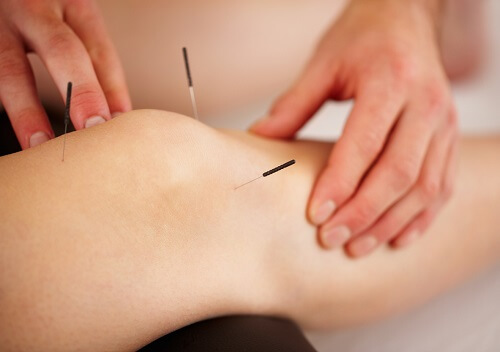
Acupuncture can be really effective way of providing pain relief without having to take pills. Needles are placed at various points around the body to block pain signals and improve circulation.
Studies have shown acupuncture to be a particularly
effective knee joint pain treatment for
arthritis. It should only be carried out by a fully trained professional acupuncturist.
9. Tubigrip Compression Bandage
This is a special elastic bandage which provides compression to reduce swelling and provide support. It is cheap, easy to apply and very comfortable. It can be used in both the initial stages after an injury or for longer term problems.
Visit the
Tubigrip section
to find out why it is such an effective knee joint pain treatment, how it works, what size is right for you and where you can buy it from at the best price.
10. Knee Surgery
Often these knee joint pain treatments we've looked at here work brilliantly, but sometime the damage to the joint will require surgery. It may be minor surgery like an arthroscopy or a full blown joint replacement, but the outcome is usually extremely positive.
In the
knee operations
section we look in-depth at the most common types of surgery, such as knee replacements and ACL surgery, who they are appropriate for, what happens during surgery, the recovery process and any common problems encountered.
How To Do Stairs With Knee Pain
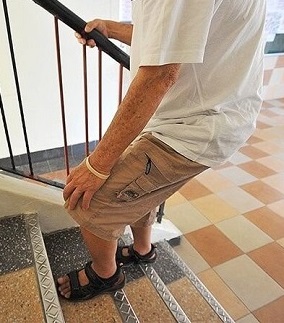
The topic of knee joint pain treatment would be incomplete without looking at the practical issue of what is the best way to get up and down stairs with knee problems.
Stairs are one of those activities most of us do at least twice a day, and many of us, a great many more times than that. But any inflammation, irritation, injury to the knee can make it really painful to get up and down stairs.
But, the good news is, there are some simple things that you can do that can really help you to be knee pain on stairs, such as thinking about which leg goes first, how to safely use crutches on stairs, and when and how to do stairs. Check out the article How To Beat Knee Pain On Stairs >
New: Knee Pain Book
We are pleased to announce the launch of our new book Beat Knee Pain: Take Back Control. In it, you will find everything you need to know about working out what is wrong with your knee and how to treat it. Rated 4.6/5 on Amazon and Goodreads. Learn More >
How Long Does It Take To Heal?
Knee joint pain treatment is most effective when it is started as soon as possible, particularly with an injury, and when done regularly. For example, using ice 5-6 times a day is going to produce much better results than only using it once.
It can take a while to notice the benefits from knee joint pain treatments as things take time to settle down so it is important to continue with them until things have improved.
Soft tissue injuries usually take 6-12 weeks to heal and strengthening muscles often takes 1-2 months of regular exercise to notice the benefits so don't give up too soon.
Please remember, you should always consult your doctor with any new incidence of pain to ensure you are getting the best treatment for you and that you aren't at risk of further injury.
Treatment By Condition
If you are looking for treatment knee joint pain treatment advice for a specific knee condition or injury choose from the following:
- Bakers Cyst Knee Treatment
- Calf Muscle Tear Treatment
- Knee Arthritis Treatment
- Locked Knee Treatment
- Meniscus Tear Treatment
- Prepatellar Bursitis Treatment
- Resistance Bands vs Weights
- How To Improve Knee Flexibility
- How To Do Stairs With Knee Pain
- Home Remedies For Knee Pain
- Swollen Knee Treatment
- Top 10 Ways To Beat Knee Pain
And remember, the sooner you start knee joint pain treatment, the quicker you will recover and get back to doing the things you love.
Page Last Updated: 12/02/24
Next Review Due: 12/02/26
